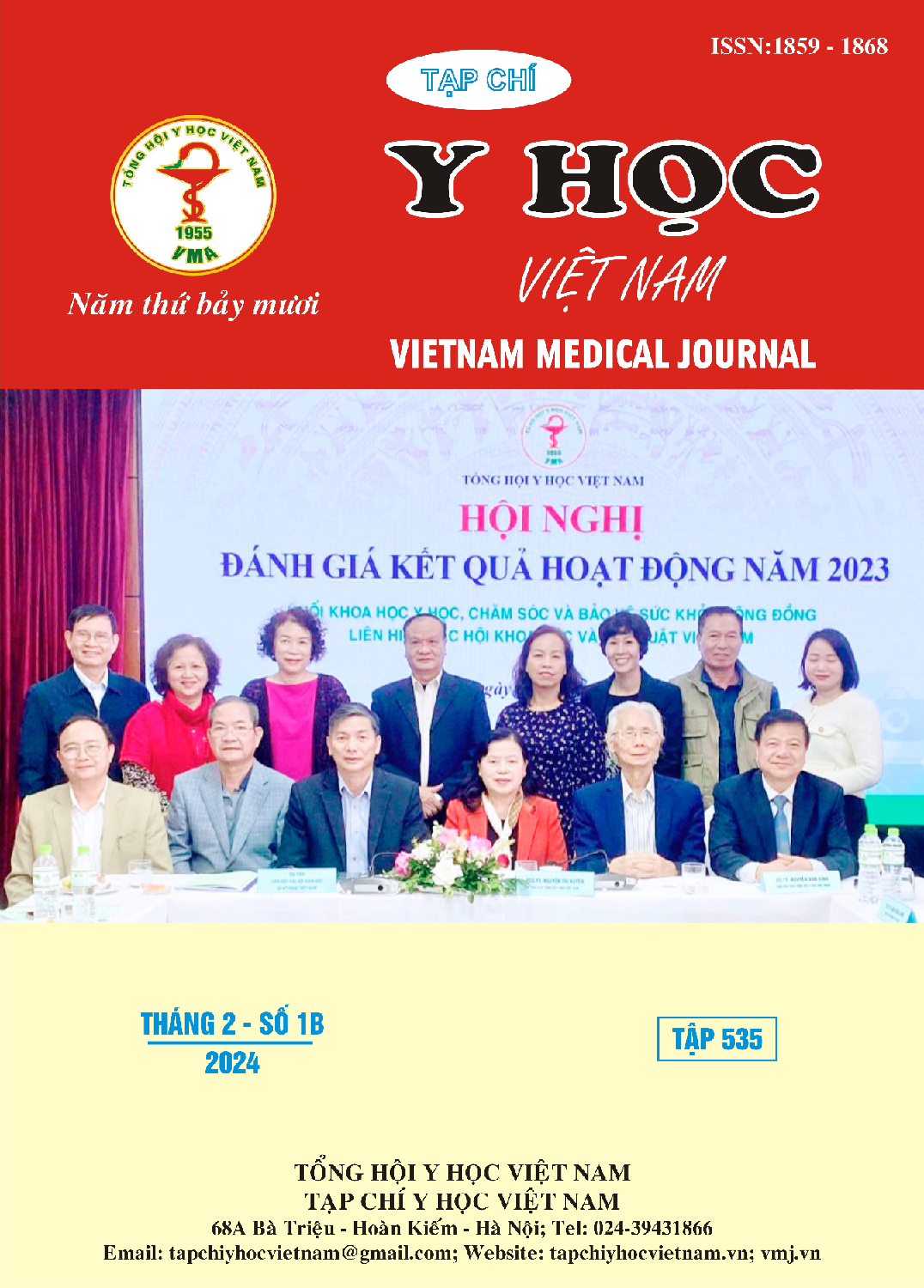TÁC ĐỘNG CỦA COVID-19 ĐẾN DINH DƯỠNG VÀ HOẠT ĐỘNG THỂ LỰC CỦA SINH VIÊN TRƯỜNG ĐẠI HỌC Y HÀ NỘI
Nội dung chính của bài viết
Tóm tắt
Mục tiêu: Nghiên cứu thực hiện nhằm đánh giá tác động của COVID - 19 đến những thay đổi về dinh dưỡng và hoạt động thể lực của sinh viên trường Đại học Y Hà Nội trong năm 2021-2022. Phương pháp nghiên cứu: Nghiên cứu mô tả cắt ngang trên 1253 sinh viên. Kết quả: Trong 1253 sinh viên tham gia nghiên cứu có 987 sinh viên nữ (chiếm 78,8%) nhiều hơn gấp 3 lần so với 266 sinh viên nam (chiếm 21,2%). Tại giai đoạn bình thường mới, tỷ lệ lựa chọn các loại thực phẩm chủ yếu được sinh viên lựa chọn cho bữa ăn bao gồm thịt, gia cầm, cá, trứng, rau xanh, hoa quả cũng cao hơn so với thời điểm giãn cách xã hội. Về số bữa ăn/ngày: tỷ lệ sinh viên có thói quen ăn 3 đến 4 bữa /ngày ở giai đoạn bình thường mới tăng cao hơn so với thời điểm giãn cách xã hội (71,8% so với 48,1%) trong khi tỷ lệ sinh viên có thói quen ăn 1 đến 2 bữa/ngày và trên 5 bữa/ngày thấp hơn so với thời điểm giãn cách xã hội (27,0% và 1,2% so với 50,4% và 1,5%). Về số bữa sáng/ tuần, tại giai đoạn bình thường mới tỷ lệ sinh viên có thói quen ăn sáng hàng ngày và thói quen ăn sáng từ 0 đến 3 ngày/tuần tăng cao hơn so với thời điểm giãn cách xã hội (47,1% và 23,8% so với 35,0% và 21,2%). Thời gian ngồi tĩnh tại mỗi ngày, thời gian xem tivi mỗi ngày, thời gian sử dụng laptop/tablet/máy tính, thời gian sử dụng điện thoại, thời gian học đều thay đổi theo hướng tiêu cực ở giai đoạn giãn cách xã hội. Bên cạnh đó các hoạt động thể lực cũng có xu hướng tăng lên theo hướng tích cực ở thời điểm bình thường mới so với thời kỳ giãn cách xã hội. Kết luận: COVID-19 tác động theo hướng tiêu cực đến thói quen dinh dưỡng, hoạt động thể lực, giấc ngủ của sinh viên tham gia nghiên cứu.
Chi tiết bài viết
Từ khóa
: Dinh dưỡng, hoạt động thể lực, COVID-19, sinh viên, Y Hà Nội
Tài liệu tham khảo
2. Organization WH. COVID-19 in Viet Nam Situation Report 106. https://www.who.int/ vietnam/internal-publications-detail/covid-19-in-viet-nam-situation-report-106
3. The Lancet. The COVID-19 pandemic in 2023: far from over. Lancet. Jan 14 2023;401(10371): 79. doi:10.1016/s0140-6736(23)00050-8
4. Ullah R, Ong SS. COVID-19 and Medical Students. Arch Iran Med. Oct 1 2020;23(10):722-723. doi:10.34172/aim.2020.94
5. Eleftheriou A, Rokou A, Arvaniti A, Nena E, Steiropoulos P. Sleep Quality and Mental Health of Medical Students in Greece During the COVID-19 Pandemic. Front Public Health. 2021;9: 775374. doi:10.3389/fpubh.2021.775374
6. Bertrand L, Shaw KA, Ko J, Deprez D, Chilibeck PD, Zello GA. The impact of the coronavirus disease 2019 (COVID-19) pandemic on university students' dietary intake, physical activity, and sedentary behaviour. Appl Physiol Nutr Metab. Mar 2021;46(3):265-272. doi:10. 1139/apnm-2020-0990
7. Duong TV, Pham KM, Do BN, et al. Digital Healthy Diet Literacy and Self-Perceived Eating Behavior Change during COVID-19 Pandemic among Undergraduate Nursing and Medical Students: A Rapid Online Survey. Int J Environ Res Public Health. Sep 30 2020;17(19)doi: 10.3390/ijerph17197185
8. Rodríguez-Larrad A, Mañas A, Labayen I, et al. Impact of COVID-19 Confinement on Physical Activity and Sedentary Behaviour in Spanish University Students: Role of Gender. Int J Environ Res Public Health. Jan 6 2021;18(2)doi: 10.3390/ijerph18020369


